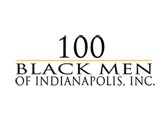The Walker Today
Today the Madame Walker Theatre Center is alive with the same kind of anticipation and activity as in the 1950's. Recent jazz performances by saxophonist Kirk Whalum and bassist Wayman Tisdale kindle memories of the days when Dinah Washington, Blanche Calloway and Louis Armstrong took the stage at the Walker and when Indiana Avenue clubs like the Sunset Terrace and Trianon Ballroom helped launch the careers of Indianapolis natives Wes Montgomery, Freddie Hubbard and J. J. Johnson.
Jazz remains a centerpiece of the MWTC’s heritage, but the Walker enthusiastically embraces the full spectrum of African American performance arts from classical, gospel and opera to blues, Broadway and comedy. More than 2,000 Bobby Blue Bland fans brought lawn chairs and blankets to the first annual “Blues and Bar-B-Q Family Festival and Reunion” last July. Headliners for “Praise in the Parking Lot”—an annual sunrise gospel fest co-sponsored with Radio One and Eastern Star Church—have included Grammy Award winners Anne Nesby and Yolanda Adams. With a special mission to nurture young talent, the MWTC recently launched its first Savion Glover Tap Dance Camp a few weeks after hosting the annual Youth-in-Arts Camp, a program that has provided performing arts training for hundreds of inner-city youth during the last decade.
The Grand Casino Ballroom—the site of hundreds of fraternity dances, sorority galas, debutante balls, Walker Beauty School graduations, wedding receptions and fashion shows through the years—now hosts monthly signature events, including Jazz on the Avenue, Thank God It’s Friday gospel concerts and the raucous Laughin’ on the Avenue.
In keeping with Madame Walker’s interest in entrepreneurship and community service, a three-room conference center designed for business meetings, now occupies the space where Madame C. J. Walker Manufacturing Company employees hand-mixed Glossine and Temple Salve for daily shipments to customers throughout the United States, Africa, Central America and the Caribbean. Today, several non-profit organizations—including MEDIC, Freetown Village and the Indianapolis chapters of the National Coalition of 100 Black Women and the National Bar Association—make their headquarters in offices where black physicians, dentists and attorneys once practiced.
Designated a National Historic Landmark in 1991, the MWTC makes Indianapolis one of the few American cities able to claim such tangible evidence of its African American cultural history. Chicago’s original Regal Theatre, built in 1928, was razed in 1973. Like the Walker, Washington, D.C.’s Lincoln Theatre, which opened in 1922, has been restored. Harlem’s Apollo, which maintained a whites only policy until 1934, has been a premier venue for black artists for more than seven decades. But the Walker stands alone among those renowned theaters because it was black-owned from the start.








